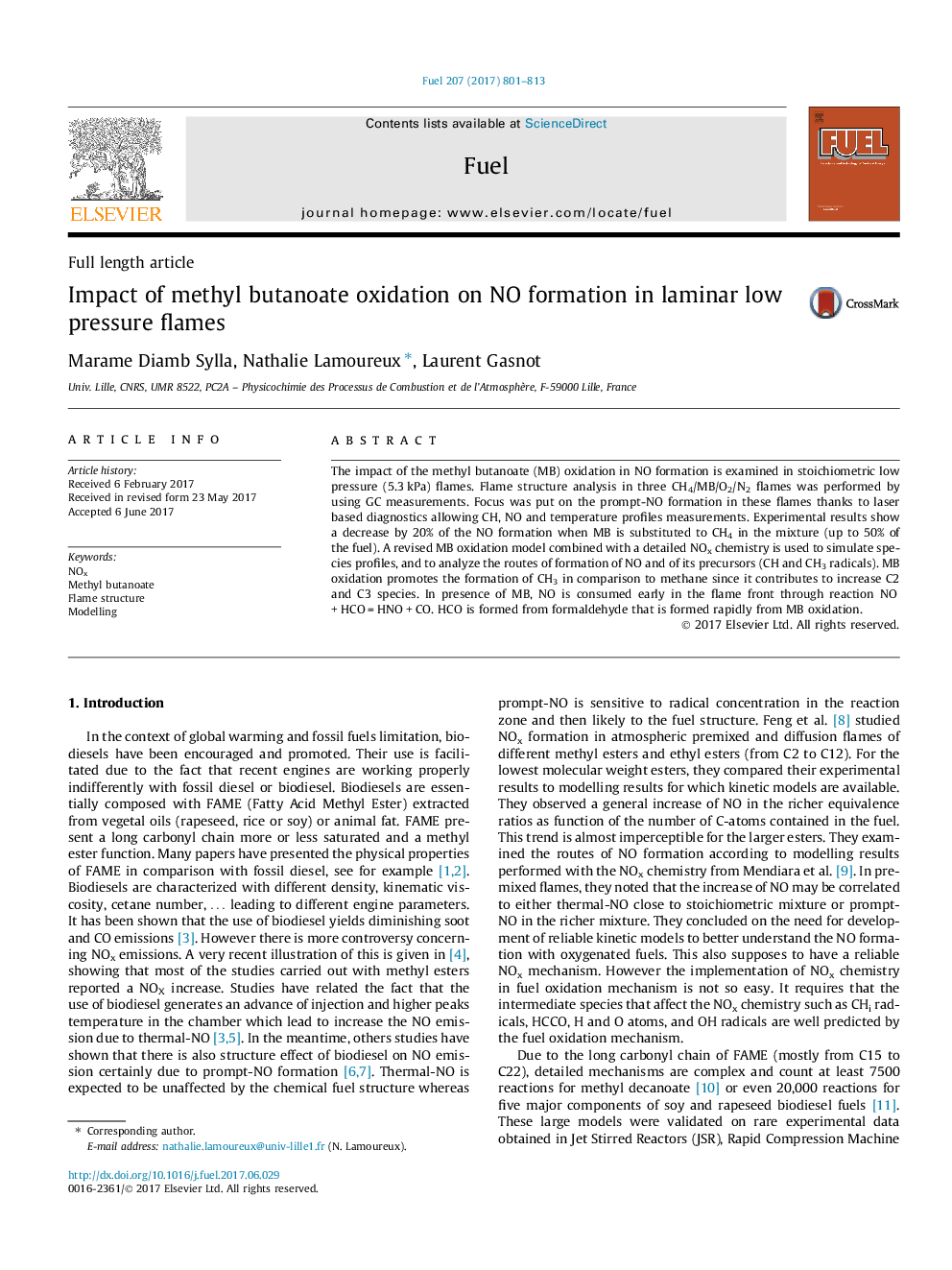| Article ID | Journal | Published Year | Pages | File Type |
|---|---|---|---|---|
| 4768535 | Fuel | 2017 | 13 Pages |
Abstract
The impact of the methyl butanoate (MB) oxidation in NO formation is examined in stoichiometric low pressure (5.3Â kPa) flames. Flame structure analysis in three CH4/MB/O2/N2 flames was performed by using GC measurements. Focus was put on the prompt-NO formation in these flames thanks to laser based diagnostics allowing CH, NO and temperature profiles measurements. Experimental results show a decrease by 20% of the NO formation when MB is substituted to CH4 in the mixture (up to 50% of the fuel). A revised MB oxidation model combined with a detailed NOx chemistry is used to simulate species profiles, and to analyze the routes of formation of NO and of its precursors (CH and CH3 radicals). MB oxidation promotes the formation of CH3 in comparison to methane since it contributes to increase C2 and C3 species. In presence of MB, NO is consumed early in the flame front through reaction NOÂ +Â HCOÂ =Â HNOÂ +Â CO. HCO is formed from formaldehyde that is formed rapidly from MB oxidation.
Related Topics
Physical Sciences and Engineering
Chemical Engineering
Chemical Engineering (General)
Authors
Marame Diamb Sylla, Nathalie Lamoureux, Laurent Gasnot,
